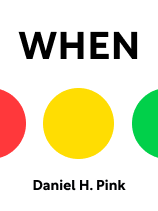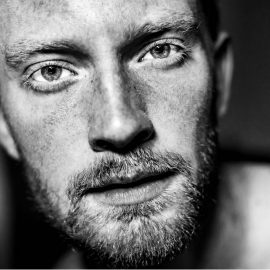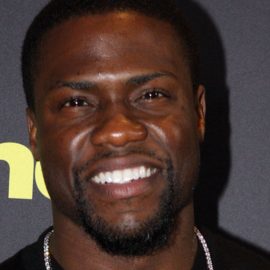

This article is an excerpt from the Shortform book guide to "When" by Daniel H. Pink. Shortform has the world's best summaries and analyses of books you should be reading.
Like this article? Sign up for a free trial here.
What is the fresh start effect? How can you use the fresh start effect to your benefit?
The fresh start effect is the human tendency toward action during special occasions or temporal landmarks. Just as people feel more optimistic and capable at the start of a day/week/year, they also feel more optimistic and capable when they’re at the beginning of a project or a new job.
Keep reading to learn about the fresh start effect and how you can use it to your advantage.
The Power of New Beginnings
Beginnings give people the opportunity to draw a line that mentally separates the past and the future. By distancing ourselves from past mistakes, or habits, it becomes possible to picture a different (improved) version of ourselves. Furthermore, because beginnings naturally follow endings, they’re opportunities for reflection. When people step back to take a broad view of their lives, they’re more likely to consider bigger aspirational goals that may have previously fallen by the wayside.
(Shortform note: The study cited by Pink also explains that the idea that we aren’t defined by our past mistakes is an important and widely held cultural belief. For example, Christians can be “born again,” suggesting the possibility of a spiritual rebirth and the opportunity to let go of a past self. Similarly, Catholic confession and penance give believers the chance to start fresh despite past sins. Other religious groups also offer different rituals of purification or ablution. These examples offer evidence of a broader cultural belief in the power of new beginnings.)
In order to take full advantage of the fresh start effect, Daniel Pink recommends being intentional about “when” we start something.
First, Pink suggests taking advantage of temporal landmarks as built-in opportunities for a fresh start. Temporal landmarks are moments in time that hold more meaning than others, often signaling the end of one thing and the start of another. This might be the start of a new year, a birthday, or even just a Monday. These temporal landmarks provide people opportunities to reflect and set goals.
Temporal landmarks can be further broken into two categories: social and personal. Social landmarks, like calendar dates and national holidays, are shared by many people, while personal landmarks, like birthdays, anniversaries, and job changes, are unique to the individual. When we consider the accumulation of social and personal temporal landmarks, there are hundreds of potential new beginnings within a year. Each of these new beginnings offers an opportunity to reflect and set goals.
(Shortform note: Social temporal landmarks can be used not only to inspire personal behavior change but also influence desired behavior change in others. Lirio, a behavior change company, outlines how professionals can use the “temporal landmark effect” to encourage behavior change. For example, nonprofit professionals can use the beginning of the year as a natural time to recruit volunteers, or companies can offer rewards or bonuses leading up to social temporal landmarks to increase their perceived value.)
Pink also argues that we can’t take full advantage of beginnings if we aren’t primed to do so. Returning to our previous discussion of chronotypes, this means that we’re less likely to be successful if we tackle a challenging project in the middle of the day when our focus and energy wane.
(Shortform note: Pink acknowledges that in a 9-to-5 society, taking advantage of peak energy levels is challenging for Night Types. The typical work day is scheduled around the ideal working hours for Morning Types. However, some workplaces are experimenting with new models that encourage employees to work during the hours that they’re most alert and productive. For example, Southwest Airlines allows pilots to choose between morning and evening flights, and a Danish pharmaceutical company allows all its employees to design their work schedule based on their biological rhythm, going so far as to suggest that employees’ circadian rhythms should become an issue for human resources to consider moving into the future.)
For example, Pink points to research about school start times. Despite young people’s sleeping patterns shifting later in their teens, school hours have remained largely unaffected, with some high school classes beginning as early as 7:00 a.m. However, numerous studies have shown that later start times not only improve student motivation, well-being, and mental health, but also result in improved standardized test scores and graduation rates. This example shows how one small change in when the day starts can lead to dramatically different outcomes.
(Shortform note: While school start times across the US have remained largely unchanged due to conflicts with parents’ work schedules, some districts have experimented with delayed school days for their middle and high school students. For example, in 2019 the Kerman Unified School District in Fresno County, CA implemented an 8:30 a.m. start time for all high schools. While the new school schedule presented challenges, like the necessity of before and after school supervision for students, it has also had unexpected benefits. Staggered start times have allowed the district to save money on transportation, with one bus driver now able to do multiple runs for different age groups.)

———End of Preview———
Like what you just read? Read the rest of the world's best book summary and analysis of Daniel H. Pink's "When" at Shortform.
Here's what you'll find in our full When summary:
- How our daily lives and experiences follow predictable patterns
- How to harness this daily rhythm to work and live more intentionally
- Why the middle of an experience is the hardest part






